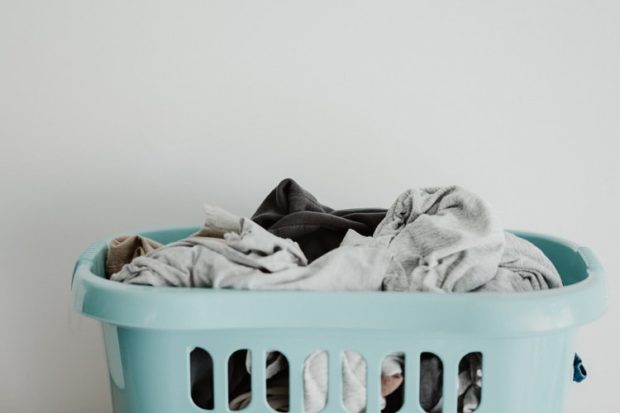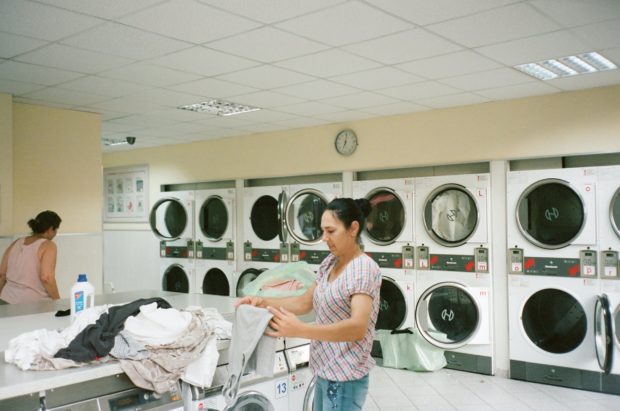How you get viruses and germs on your clothes, and what experts recommend to remove them
During this Covid-19 pandemic, the quarantine protocols have forced us to #StayAtHome, and the Inter-Agency Task Force (IATF) for the Management of Emerging Infectious Diseases has mandated the wearing of face mask, face shield, and practicing of physical distancing.
But despite how much we want to stay home, there is a roster of things to do outside—from working or volunteering as a frontliner, to doing your grocery runs. So how can you ensure you are not spreading germs and viruses within your household after going out? Experts caution every individual about bringing in germs and viruses through the clothes we wear outside.
So if the first thing you do is to sit on the couch, lay in bed or cuddle with the family as soon as you get home, even still with the clothes that you have been wearing all day, you may want to reconsider.
The Department of Health (DOH) has recommended to wash used clothes instantly and thoroughly, especially those with secretions on them. Changing clothes and immediately washing them once you get home is the best thing to do. The choice of powder detergent is also key. It is crucial to use only detergents that guarantee total and effective disinfecting and sanitizing of used clothes such as Ariel that has been proven to remove viruses and germs with just one wash.
Endorsed and recommended by the experts at the Philippine Society for Microbiology Inc., Ariel rids 99.9% of viruses and germs in your clothes (Disclaimer: * Tested only on Influenza Virus; not tested on SARS-COV-2 virus and tested only on one germ on cotton). Its unique tri-active clean formula cleans, whitens, and brightens your clothes, and gives 24-hour protection, providing Filipino families with safer, more hygienic, germ-free homes.
Ariel’s power against viruses and germs
Choosing the type of detergent should go beyond mere preference, it has to serve a need. P&G Philippines has been championing the Filipino consumers’ safety and health with all their consumer products and especially with Ariel, safety is constantly at the brand’s heart because it understands how clothes can make or break the health of your family.
All of the washing detergent ingredients found in Ariel have been meticulously selected by P&G’s team of 700+ experts and have been thoroughly tested to ensure they are safe for your family and the environment. All Ariel products are manufactured and distributed in full compliance with the UK and international safety standards using the four-step, science-based product safety process, undergoing the strictest affirmation of major regulatory agencies.
Ariel laundry washing powder and liquid detergent efficiently remove tough stains like ink, chocolate drink, cooking oil, and chocolate but more than that, it can remove tough stains in one wash, based on a technical test on a poly-rayon fabric. Ariel is mostly used in top loading and twin-tub washing machines, as it was found to produce optimum results, especially for bulk commercial washing.
Curbing the spread of microbes on clothes using Ariel
Germs and viruses can survive in clothing for as long as nine days and it’s difficult to know if people or surfaces you come into contact with carry harmful microbes that will most likely spread infection at home. Examples of these are Staphylococcus, an infection caused by bacteria often found on the skin or in the nose; the Methicillin resistant Staphylococcus aureus (MRSA), an infection of different parts of the body that is resistant to many antibiotics; Salmonella; Norovirus; E. Coli; Acinetobacter which is a bacterium that can cause respiratory infection and pneumonia; and lately, the dreaded Covid-19 disease. All these infections are primarily transmitted through droplets of another human being.
Clearly, clothes (and even towels and linens) can spread germs coming from our own bodies as we all have bacteria in the surface of our skin, in our noses, and mouths. Some are harmless but the rest—especially for people with skin problems or wounds—can cause infection.
Other germs and viruses can also come from outer clothes such as health workers’ uniforms, high contact sports shirts (such as wrestling or football), and soiled nappies or underwear. When you’re tasked to take care of someone with an illness, or when you help prepare contaminated food, or if you unintentionally come in contact with a filthy object at work or on your way home, the risk is high.
Moreover, there are certain fabrics that are more likely to attract germs and viruses as some textiles are more absorbent than their counterparts. According to Robert Amler, Dean of the School of Health Sciences and Practice at the New York Medical College, during an interview with Huffpost, said that some researchers believe the fibers in porous material can easily catch the virus particles, dry them out, and break them apart while smooth surfaces like leather and vinyl can be wiped clean. Other cloths like polyester, spandex-like material may retain germs longer than breathable cotton-fabrics.
To reduce the risk of spreading germs and viruses, washing of clothes is highly recommended. Author and cleaning expert Jolie Kerr said: “The longer used clothes remain damp with sweat in the hamper, the more mold and bacteria are going to proliferate.” To add to that, experts suggest not to shake dirty laundry to minimize the possibility of dispersing the virus in the air. Xinhua News Agency recommends disinfecting clothes (that are resistant to high temperatures) at 56 degrees Celsius for 30 minutes.
If you have a dryer, adjust the dryer temperature to above 80 degrees Celsius and dry your clothes for 20 minutes. For clothes that are non-resistant to high temperatures, simply soak them and dry. Otherwise, hanging them out under the direct sunlight is enough, as the sun’s ultra-violet rays have disinfecting components.
One critical factors of machine- or handwashing is the laundry detergent that you use, especially with-high-risk and everyday day wear. Aside from washing the hands often, washing your clothes immediately and with the right powder detergent puts these microbes at bay.
Ariel first appeared on the UK market in 1967 and was the first detergent with stain-removing enzymes with a high-sudsing power (courtesy of its super-powered suds) that penetrates deep into the fibers and removes even the hardest stains on the first wash leaving your clothes with a fresh-clean scent. Its advanced technology of care prevents any signs of wear. Ariel Detergent is safe even for colored laundry and makes it stay fresh, clean, and spotless, with guaranteed 24-hour protection.
https://youtu.be/Gf6f9F4D87Q?t=3
ADVT

